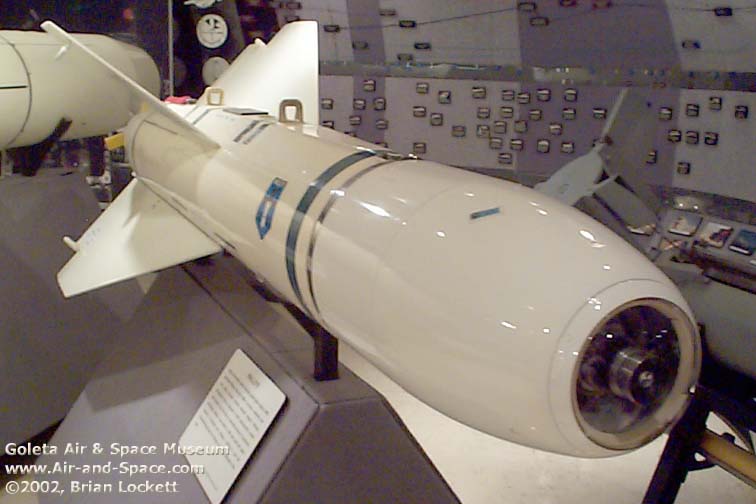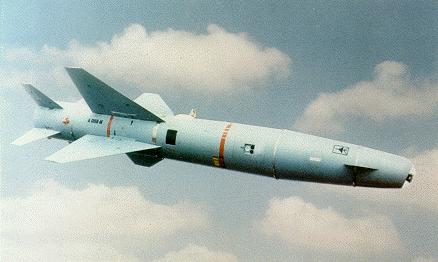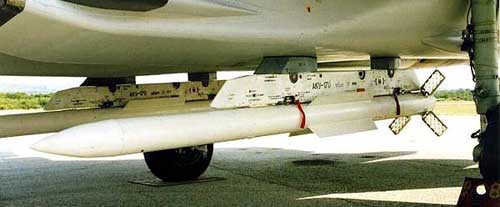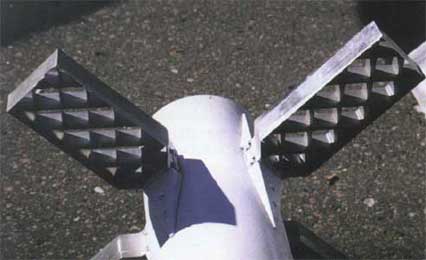seguimos mostrando los "dientes" del Sukhoi-30
 Kh-31 Krypton
Kh-31 Krypton
Variantes:
El Kh-31P (AS-17 Krypton para la OTAN) es un misil anti radiación capaz de usar hasta tres unidades de guiado radar pasivo, para cubrir distintas bandas de frecuencia que pueden ser usadas tanto contra radares terrestres de control de tiro y vigilancia, como aquellos instalados en embarcaciones navales. Los diferentes buscadores tienen la posibilidad de continuar su ataque incluso si el radar objetivo deja de emitir, gracias a una capacidad de memoria de blanco. La cabeza de combate es de 90 Kg.
Los Chinos tienen una version local llamada YJ-91, los Rusos han desarrollando una version mejor denominada KH 31PM.



Apodado el "Mini-Moskit su velocidad de Mach 4.5 fue diseñado originalmente como un misil anti-radiación utiliza un cohete sólido en la cola para acelerar el vehículo a la velocidad de encendido estatorreactor. Una vez que el propulsor se gasta, la cavidad de refuerzo se emplea como una cavidad para la cámara de combustión de queroseno ramjet alimentados que se utiliza para continuar acelerando el misil a velocidad de crucero y de mantener esa velocidad hasta que el combustible líquido se consume.
La combinación de misiles de alta velocidad, tamaño pequeño y de largo alcance hace que sea un objetivo difícil de interceptar por la defensa antiaérea.En la altitud de la Kh-31 alcanza Mach 4.5, el nivel del mar de Mach 2.7. Su-30MK preparado para el Kh-31 serie transportar hasta a seis rondas en las estaciones de banda 3, 4, 11, 12 y 9 estaciones de entrada y 10, con AKU-58 adaptadores, el Su-27SKU,No tiene equivalente en el inventario occidental,Durante la década de 1990, se presentan persistente que la célula se está adaptando para su uso como AAM de largo alcance con un papel contra el ISR, como un "AWACS-killer", con la designación R-31P.
Variants
Kh-31P (right) with R-27 (left) and Kh-59 (middle) at MAKS Airshow, Zhukovskiy, 1999
* Kh-31A - active seeker head for use as an anti-shipping missile against vessels up to destroyer size, range of 25 km–50 km (13.5–27 nmi; 15.5–31mi). Missile is sea-skimming as it approaches the target.
* Kh-31P (Type 77P) - passive seeker head for use as an anti-radiation missile. Stays at high altitude throughout its flight, allowing higher speeds and increasing range to 110 km (60 nmi; 70 mi). The seeker has three interchangeable modules to cover different radar frequency bands, but they can only be changed at the factory.[citation needed
* Kh-31AD/Kh-31PD ("Kh-31 Mod 2") - increase range "by a modest amount" through increasing the fuselage from 4.70 m (15 ft 5 in) to 5.23 m (17 ft 2 in) long.[13]
* Kh-31AM/Kh-31PM - substantial update to electronics and propulsion systems, trials scheduled for 2005/6. Updated resistance to countermeasures, better fuses, and an improved 31DP propulsion system that "considerably" improves the range with little increase in weight. The Kh-31AM has an improved RGS-31 active seeker, whilst the Kh-31PM replaces the L-111, L-112 and L-113 seekers with a single multiband unit, the L-130.
* MA-31 - telemetry and other systems installed by McDonnell Douglas/Boeing for use by the US Navy as a target drone. Tested between 1996-9; a version upgraded with GPS, the MA-31PG, was offered to the Navy as a replacement for the MQM-8 Vandal but they bought the GQM-163 Coyote. Even with the additional equipment, the MA-31 was capable of Mach 2.7 and 15G manoevres in its anti-ship (sea-skimming) flight profile and Mach 3.5 in ARM mode at 48,000 ft (15,000 m).
* KR-1 - version of the Kh-31P exported to China in 1997. It seems that Zvezda wanted to sell an initial batch of KR-1's to China, before the KR-1 went into production in China. Rather than the original three seeker modules, the KR-1 has a single K-112E "export" seeker targeting D-F band (S band) emissions, and reportedly optimised for specific Taiwanese radars.
* YJ-91 Ying Ji 91 - Chinese missile based on the Kh-31P, with faster speed, slightly longer range, and easier switching of seeker heads.[citation needed] They are also reported to have developed an anti-shipping version with an indigenous active seeker, and are looking to develop this for use in submarines. The name YJ-91 was already in use by 1997, and may have been a Chinese name for the original Russian missiles designated X-31 by the Russians. By 2005, the name YJ-93 was being applied to missiles made in China, but Western reports generally do not distinguish between YJ-91 and YJ-93.
An active/passive air-to-air version for use against slow-moving support aircraft, a so-called "AWACS killer", was announced at the 1992 Moscow air show with 200 km (110 nmi; 120 mi) range. That would be less than the 300–400 kilometres (160–220 nmi; 190–250 mi) promised by the Vympel R-37 (AA-13 'Arrow') and Novator R-172 missiles, but a Kh-31 derivative could be carried by a wider range of aircraft. However this may have been mere propaganda; in 2004 the Tactical Missiles Corporation "emphatically denied" that it had ever worked on an air-to-air version of the Kh-31.In 2005 rumours persisted of a Russian AWACS killer based on the Kh-31A anti-shipping model, and of the Chinese adapting the YJ-91, derived from the Kh-31P, for the same purpose.
saludos
















